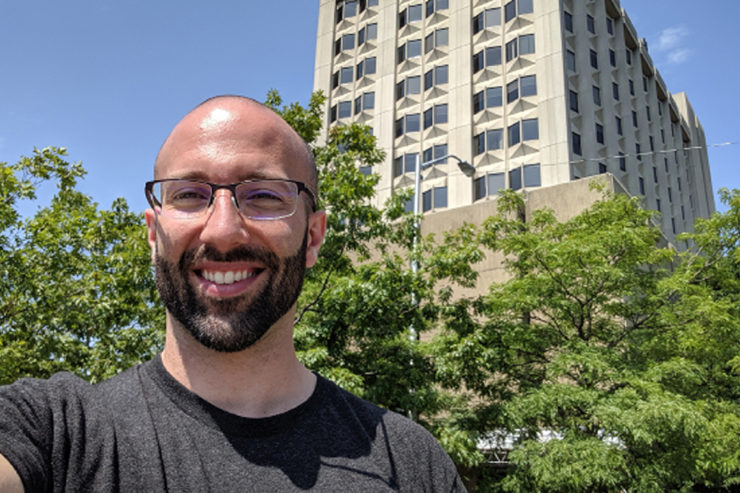Does designing, building, or critiquing media and policies pique your interest? How about collaborating with people of interdisciplinary educational backgrounds and exploring the intersections between information, technology, and society? Let me tell you about my experience with the Knowledge Media Design Collaborative Specialization (KMD-CS) so far during my PhD and MA program.
My name is Joel Wiebe and prior to arriving at the University of Toronto my educational background included a BSc in Computer Science, involving research in Human-Computer Interaction (HCI) followed by work experience as part of an E-learning team at a Canadian University. Making the switch to an MA—and now a PhD—at OISE was a significant adjustment for me. I joined the KMD collaborative program to complement my coursework at OISE and in many ways felt at-home here in terms of the program’s similarities to my previous HCI research.
At the Knowledge Media Design Institute (KMDI), I have been able to meet and collaborate with diverse people, gain hands-on experience performing relevant research, and enjoy the design-oriented components of these courses.
In a recent course on Knowledge Media and Learning, we as students taught themed weeks including topics of Digital Literacies; Formal Education; Work, Home, and Community; and Wellness. Simultaneously we engaged in design thinking and prototyping of technologies to address issues which affect our society. I worked in a small team, representing backgrounds in education, journalism, and (me in) computer science, to interview possible stakeholders and create a prototype of an app for educating students and engaging them in collaborative activities around identifying bias and reliability in online sources (i.e. verifying credibility of cited sources and collaboratively annotating online articles) in response to concerns of fake news.
My course on Theory and Methods in KMD involved hands-on observations of people using parking meters, design and evaluation of paper prototypes for a hypothetical app, and a project which took us through the complete process of performing research. My team contacted a professor in China to perform a study on learning analytics for collaborative learning, using technology custom-designed by IKIT, a research lab at OISE. We brainstormed, developed research questions and performed the study, presenting the results at the bi-annual KMDI poster session for students, faculty, and alumni.
Another course and project was Applications in Knowledge Media involving a seminar-style discussion of ethical issues and a research proposal regarding use of technology and, specifically, the “digital trace data” we leave behind while using technologies and the internet. In this course, I designed a related study which used technology to support students in collaboratively discussing and creating theories about mathematical concepts within their classrooms and throughout their playgrounds. This concept went on to be briefly piloted in multiple schools in Ontario.
KMDI has provided me with a variety of opportunities for hands-on learning, a diverse course-selection, and opportunities to meet and collaborate with interesting people. However, the real power of this program comes in the interdisciplinarity, community, and the creativity of its members—enrolled students, faculty liaisons, and partners. If any of this sounds interesting to you, look into the KMD-CS program which contributes to the KMDI community and its developing future.

